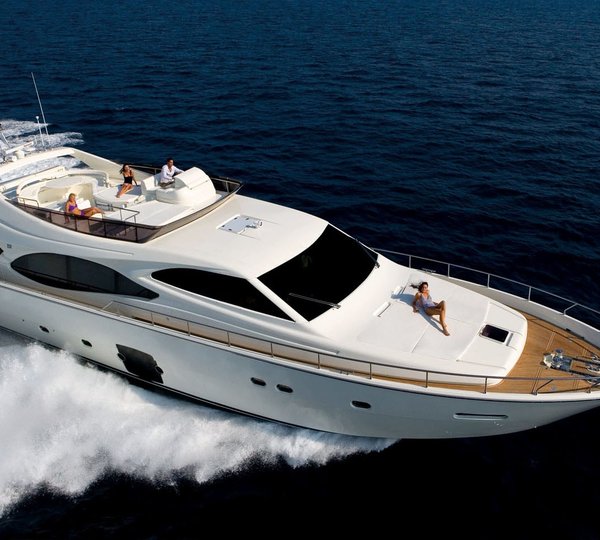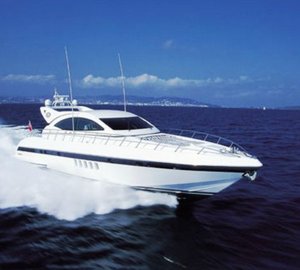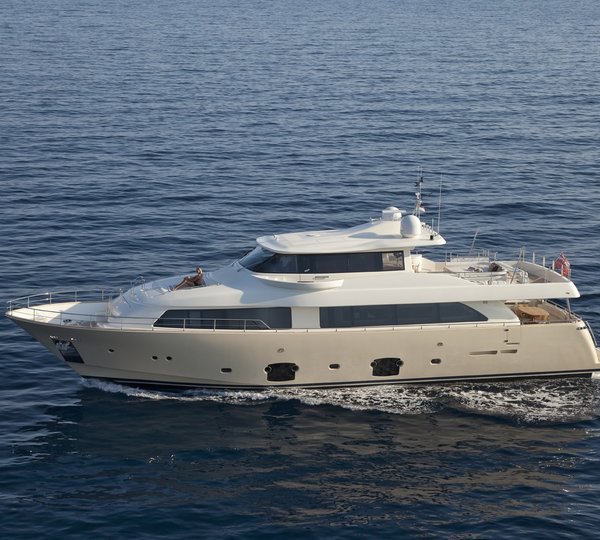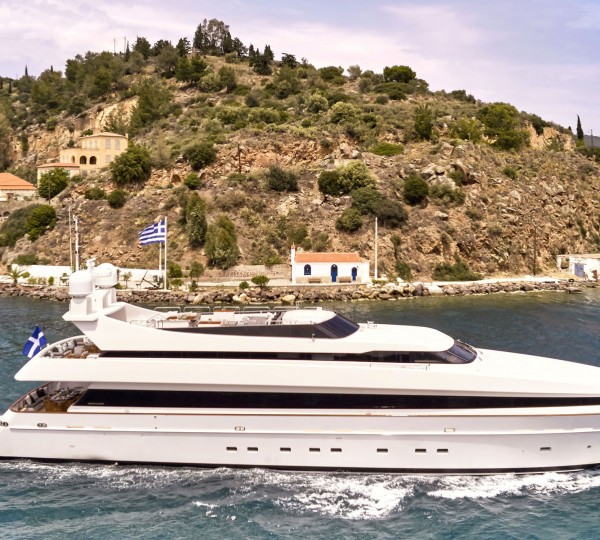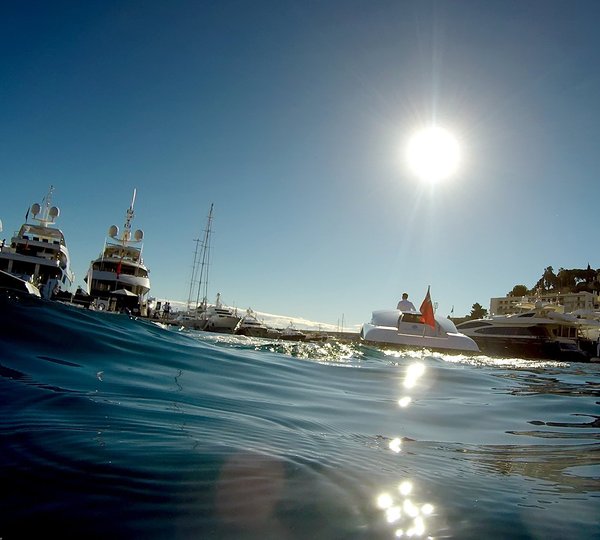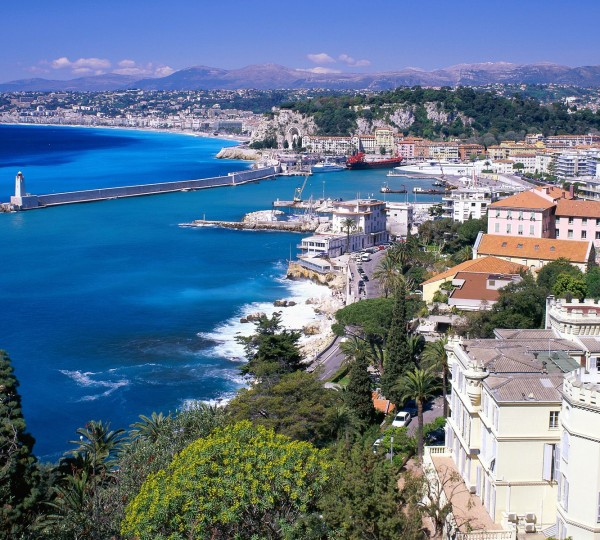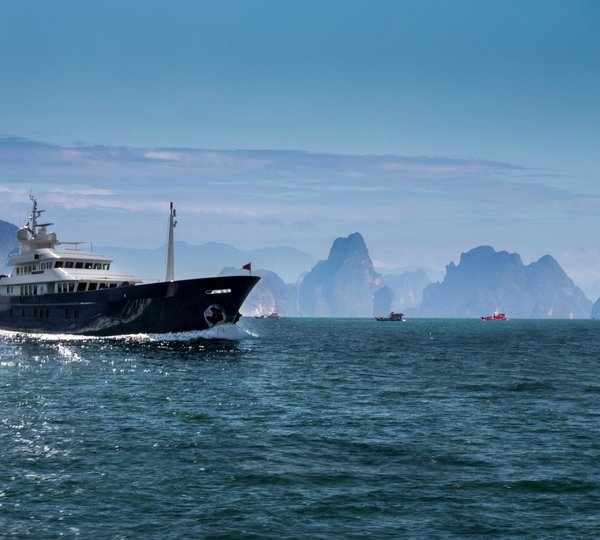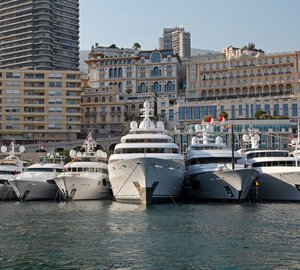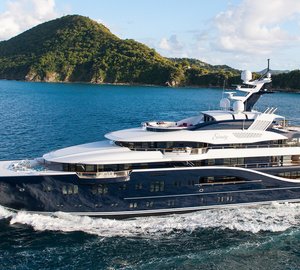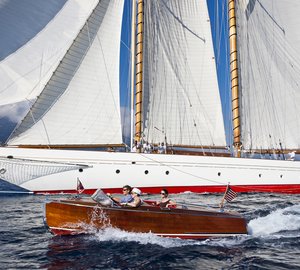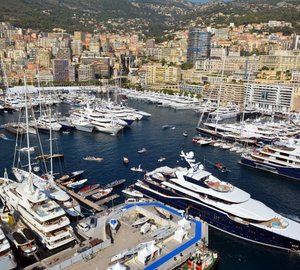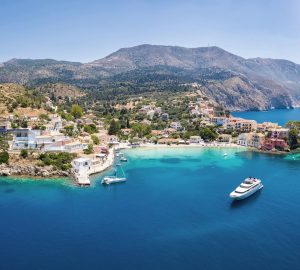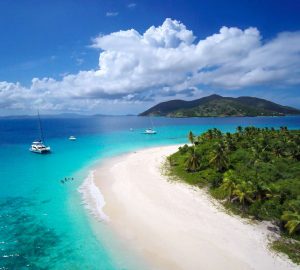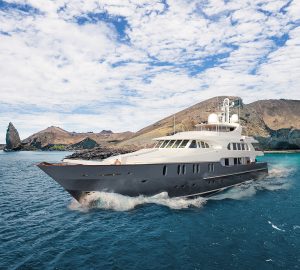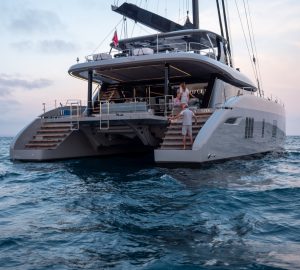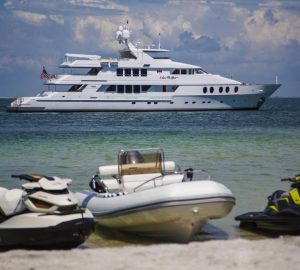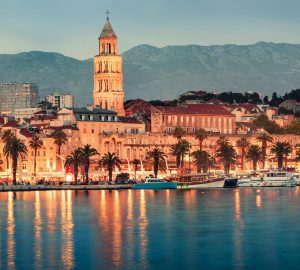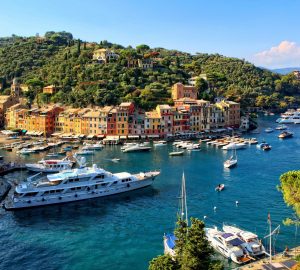International yachting professionals gathered at the Yacht Club de Monaco for the 3rd “La Belle Classe Superyachts” Symposium. They discussed various issues in the superyacht industry and reflected on the market of 2010, as well as looked forward to likely future developments in the superyacht industry.
Rationalisation beckons in 2011
Monaco, 20 January 2011: under the aegis of “La Belle Classe Superyachts”, a label initiated by the Yacht Club de Monaco to unite all those involved in the yachting industry and support club members in this sector, 45 delegates attended a dinner-debate at the YCM. Participants represented the complete luxury yachting chain (shipyards, brokers, designers, captains and specialists in yacht finance, insurance, surveys and law) and they came to take stock of the current economic situation in their industry.
Hosted by Bernard d’Alessandri, YCM Secretary General, and organised with the support of Only Yachts, this third symposium was also of great interest to the Monegasque authorities. Among those attending were HE Marco Piccinini, Adviser to the Government on Finance and the Economy, Paul Masseron, Advisor to the Government for the Interior, Jean-François Robillon, President of the Conseil National (Monaco’s parliament), Jean-Louis Bissuel, Director Maritime Affairs, Jean-François Tourret, Manager of Saint-Tropez Port, as well as Gian Battista Borea d’Olmo and Daniel Realini, respectively Managing Director and Operations Director for the SEPM (Société d’Exploitation des Ports de Monaco) which manages the two ports in Monaco.
After an introductory speech by David Legrand of Fraser Yachts, in which he described the current situation and gave his macro-economic vision of the yachting sector, everyone had an opportunity to express their views and put forward their analyses and experiences in a friendly and constructive atmosphere.
Resumption of Yacht Sales
“After a difficult end of year in 2009, 2010 saw a recovery in sales with transactions to the value of 2,575,866,000 euros, a +30% increase on 2009. And the average value of these transactions was 13 million euros,” began David Legrand.
The rise is explained by a significant drop in prices for the 30 to 40 metre vessels, generating a considerable volume of business as owners sought to quickly raise cash.
2010 also led to an adjustment in prices of second-hand boats. As a result, sales picked up again in a generally stabilised market, even though there are still discounts to be had. There is a better balance between the number of boats coming onto the market and those sold or taken off the market, so the situation is healthier which has led to a recovery, particularly in bargains.
It was also noted that the refit business has held up, although there are no longer the big renovations of previous years: further proof that owners are again more conscious of cost.
Espen Oeino observed that the level of serious enquiries for new-builds among designers seems to be higher than in 2009, a positive sign that should be confirmed by actual contracts.
“Clients have become more demanding and try to push the price to the maximum due to a lack of clarity. The Russian market collapsed on the Côte d’Azur, particularly between the end of 2009 and mid-2010, except for vessels over 35 metres,” reports Philippe Blattès, exclusive Importer for Azimut-Benetti (Monaco and France).
Among comments relayed from the Heesen shipyard, represented by Marketing Manager Sara Gioanola: “After the sale in December of a 51 metre to a Russian in his thirties, we have just signed another contract for a semi-customised 50 metre.”
Chartering at half-mast in 2010 but a fairer wind forecast for 2011
Contrary to all expectations, 2010 was a very difficult year for the charter market (30-40 metres), with last-minute or very late bookings at rock-bottom prices (-30%). The customary clientele preferred to take advantage of generous discounts in the second-hand market, and a chance to take out loans at very competitive rates to buy a yacht rather than charter.
Some in the profession fear these new owners (with a discounted product) will not be able to manage yacht maintenance costs (around 10% of the real value of a yacht per year). They are afraid the second-hand market in 2011 may become saturated, leading to a depreciation of the new-build sector which must maintain its production costs.
Some brokers remain optimistic for 2011, such as Kristen Ringsing (YachtZoo) who says his company has already signed contracts early in the year which was not the case at the same period in 2010.
Crews get a rough ride
Crewing is one of the sectors most affected by the crisis, with falling wages (-30%) and the number of staff onboard reduced, which is also having an impact on crew agencies.
“Like the second-hand market, we have seen an enormous turn-over of personnel since last year,” says Jacques Conzales, President of GEPY (Groupement des équipages professionnels du yachting), and he adds: “Only the port and maritime authorities, and insurers can stress the importance of keeping crew on board to ensure not only maintenance but also security when the boat is moored up without a charter. We must not ignore the importance of having a properly trained seaman on board all year round!”
2011: A “pivotal year for shipyards”
“Many contracts signed in 2007-2008 are in the process of being delivered. They have enabled shipyards and all their suppliers to get through the crisis. Now everything hangs in the balance!” argues designer Espen Oeino.
Michael Breman, President of SYBASS (Superyacht Builders Association) and Sales Director at Lürssen, agrees: “It is important to reassure owners. The reputation and quality of production at the shipyards are decisive factors in the decision to purchase.”
“While some boatyards took advantage of the crisis to enter agreements or transactions, like Lürssen which bought a German shipyard or Oceanco that changed shareholders, for others 2011 will be a critical year once the final orders have been delivered. Rationalisation will continue in this sector. There will probably be more mergers in 2011. The present difficulties with order books for 2012 and 2013 should sound the death knell for speculative orders from those who sometimes built yachts before they had even been sold. This crisis will continue to streamline the market by reducing the competition,” affirms Olivier Blanchet, Fund Manager for Yachts (+40m) at BNP Paribas.
Yachting must step up its efforts to be recognised as an industry
“Some 53% of the world’s wealth is divided between the USA, Japan and Germany. For cultural reasons, and given what we have seen in Japan, Asia (apart from Singapore) is not yet a mature market partly due to cultural barriers and a lack of infrastructure. At present, South America is a more promising market than Asia, contrary to what one might think. Certainly, since 2009 and for the first time, the population of Asian “Ultra High Net Worth Individuals” has overtaken the Europeans. However, a yacht is still not an investment they make on impulse because they are yielding to a passion, as usually happens with this clientele. Today they think first about the way it is built before wanting to buy one. We estimate that there are around 100,000 people in the world likely to buy a yacht of +30 metres,” says Olivier Blanchet.
And he continued: “The average period of keeping a yacht is five to seven years maximum and in terms of value that represents around 12-15 billion for yachts of +24 metres.”
“We see yachting as an industry that must become more professional and better structured if it is to fully mature. The banks’ aim is to have an integrated approach: from the shipyard to the end user. The tendency is to ask those who are building the yachts for bank guarantees and the shipyards to ask for guarantees of payment. Under these conditions, legal contracts for construction, sub-contracting and credit is the key. The boat’s pedigree and the value of the maritime assets are just as important as the assurance given by the future owner on the means they have to buy the yacht of their dreams, but especially also their ability to maintain it properly with respect to nautical tradition. It is a relationship that must be set up for the medium term. It’s all about teamwork, from the designer and shipyard through the broker, manager, insurer, and so on; each has a role to play in the chain!”
“This sector is important when you remember that it generates 300,000 jobs in Europe. It is an industry on which people’s livelihoods rely: two billion euros in Italy and nearly a billion pounds sterling in GB. It is not by chance that the luxury industry is also interested in this sector; take for example the LVMH group which has got closer to Princess. These two industries focus on marketing and tailor-made products to meet the demands of a common clientele and thereby minimise depreciation of their production.”
“It’s true that this is an industry which doesn’t defend itself enough and suffers from a poor image. We need to communicate better! It’s up to us to explain that it creates jobs!”
Antoine Perry, Administrator at the Nice CCI (Chamber of Commerce & Industry) agrees: “We have identified 1,200 companies just between Cannes and Nice (excluding Monaco), that’s 3,600 direct jobs. Yachting is fourth for employment in the district [Alpes-Maritimes].”
Maintain its implied position as leader
“Monaco and the Côte d’Azur have assets. It is important to analyse and examine how we can lift our game to attract owners and respond to expectations about how best to exhibit their vessels when they go up for sale,” argues Philippe Blattès.
Faced with the current shortage of berths (many marinas being under construction), boat shows offer the best “shop” window. The Monaco Yacht Show helps generate sales; it is a solid bubble in terms of image and stability, and a barometer for the market. Proof of its success lies in the fact there were more than 130 yachts moored in the bay in 2010.
“For the last four to five years demand from exhibitors has been stable, with 50 to 80 companies on the waiting list who we are not able to satisfy. However, the size of yacht has changed with the 40 metre average in 2005 rising to 45 metres in 2010 and an increase in demand for yachts of over 60 metres,” comments Gaëlle Tallarida, Managing Director of the Monaco Yacht Show.
However, attention must be paid to the competition. This includes other shows such as the one at Fort Lauderdale, still an international benchmark, or the development of new marinas throughout the world whether in Liguria, where a dozen are springing up, Greece, Asia or Montenegro, or again the emergence of a new clientele and investment in South America, notably Argentina. “I was very impressed by the facilities set up in Montenegro in a former Russian naval shipyard. They already have a 100% occupancy rate in the summer and are starting to take 50 metre boats,” observes Gian Battista Borea d’Olmo, Managing Director of SEPM.
Laurent Perignon recalls: “The economic mechanisms which impact on industries producing upmarket and luxury consumer goods functioned in a similar way to luxury yachting during the crisis – and also we hope in the resolution – showing that the yachting industry is also subject to market forces. Clients are increasingly mindful of its evolution, rationalisation and professionalism.”
And Olivier Blanchet concludes: “Faced with a European market looking for a second wind, only environmental innovation to reduce energy use, with initiatives to unite players in the industry around a common goal, supported by greater transparency on prices and an ongoing search for quality, are likely to bolster development for 2011 and the years to come.”
Next rendez-vous:
“La Belle Classe Superyachts” Environmental Symposium, Wednesday 30 March 2011.



